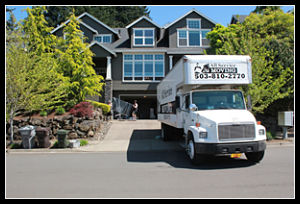Start seriously planning your move at least a month ahead of moving day to ensure your move goes as smoothly as possible.
1 Month Before Moving
- Submit a Change of Address form with USPS.
- Submit a Change of Address form with the IRS.
- Make arrangements with a moving company or reserve a rental truck.
- If necessary, make travel arrangements with airlines, car rental agencies, or hotels.
- Transfer any memberships for gyms, churches, clubs, or other civic organizations.
- Obtain medical and dental records, x-rays, and prescription information. Request referrals from your doctors and dentist.
- Check into the laws and requirements of your new city regarding home-based businesses, professional certifications, licenses, and any other local laws that might be applicable to you.
- Take inventory of your belongings before they’re packed in case you need to file an insurance claim later. If possible, take pictures or videotape your belongings. Record serial numbers of all electronic equipment.
- Make arrangements for transporting and relocating your pets.
- Start using up food items in your current home so that you have less to pack and can avoid throwing most of it out.
1-2 Weeks Before Moving
- Inform electric, disposal, water, utility, phone, cable, and any mail subscription companies of your move.
- Confirm any travel reservations.
- Reserve your building’s elevator if you are moving to or from an apartment.
- Clean all area rugs and have them wrapped for moving.
- Plan ahead for the special needs and travel plans of any infants or children.
- Collect valuables from your safe deposit box and make copies of any important documents in preparation to personally transport or mail them to your new residence.
- Confirm that you will be covered through your homeowner’s or renter’s insurance policy during the time of your move.
- Defrost your freezer and refrigerator. Place deodorizer inside to control any odors.
- Inform a close friend or relative of your travel route and schedule so that you can be reached if needed.
On Moving Day
- Double-check your closets, drawers, shelves, attic, and garage to be sure they are empty.
- Transport any important documents, money, and jewelry yourself (or use registered mail).
After Arriving at Your New Home

- Update the DMV and your car insurance company with your new address.
- Revise your will and other legal papers with your current information to avoid longer probate and higher legal fees.
- Inform your bank and any credit card companies of your new address.
- Provide your employer with your new address.
- Keep boxes, marking pens, bubble wrap, newspaper, tissue paper, packing tape, scissors, and a tape measure on hand.
- Use durable boxes and containers that can be secured tightly. Purchase special boxes for dishes and wardrobe items.
- Pack audio-video equipment in their original boxes, if you have them. Label cables and tighten transit screws. If removing screws, tape them to the objects they are removed from.
- Avoid loading more than 50 pounds into one box.
- Label each box indicating which room it should go in, whether it is fragile, and if it should be loaded last so that it will be unloaded first.
- Cushion the inside of your boxes with bubble wrap, newspaper, or tissue. Save room by using towels and blankets to wrap fragile items.
- Pack books tightly in small boxes.
- Have rugs and curtains cleaned ahead of time and leave them wrapped for the move.
- Pack any medicines in leak-proof containers.
- Carry all valuables with you.
- Check with your local U.S. Department of Agriculture for regulations regarding moving plants from one state to another. (Some states have restrictions on certain plants to prevent importing bugs or pests that can destroy crops.)

